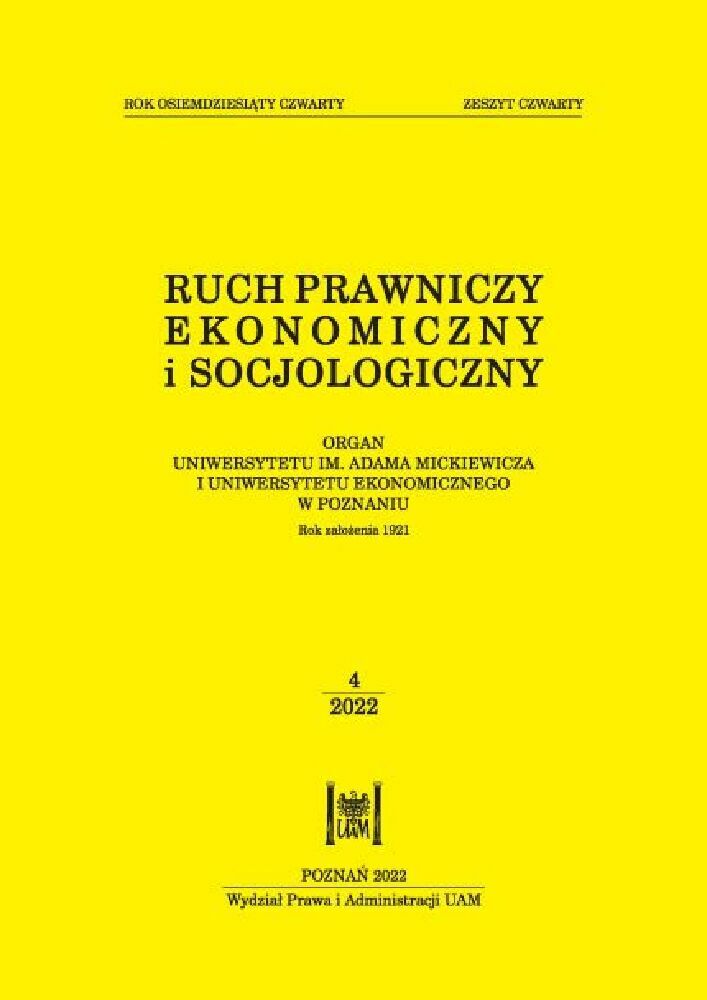Abstract
In the 1920s, following the destruction of the First World War and the subsequent migration from rural to urban areas, Europe had to deal with a serious housing problem. Consequently, of paramount importance were solutions that enabled the quick and cheap construction of buildings to accommodate the constant influx of new residents. The avant-garde group Werkbund proposed a new type of prefabricated housing estate built on site. These solutions were presented at six model exhibitions organized by Werkbund throughout Europe. The best preserved housing estate is Wrocław’s WuWa. Although some of the group’s solutions were criticized by the residents, many of the elements presented by Werkbund became part of the housing canon. The article presents the assumptions of the idea of social housing estates, and the history and circumstances of the creation of the WuWa solutions. The article considers how the modernist assumptions of Wrocław’s Werkbund estate have stood the test of time. For this purpose, research was conducted in the form of structured free-form interviews with current residents of the estate. The sociocultural assumptions which underpinned the modernist ideology have not stood the test of time, because the socio-cultural conditions have changed. In spite of this, the estate is very popular and appreciated by the current residents. Based on the collected material, one can conclude that the estate is comfortable to live in, and the urban planning assumptions of the estate are still valid. It should be highlighted that the ‘Housing and Workplace’ exhibition was an experimental project and an important one in the history of housing, as it started a discussion on the most important elements of social housing.
References
Borowik, I. (2003). Blokowiska. Miejski habitat w oglądzie socjologicznym. Wrocław: Oficyna Wydawnicza Arboretum.
Brukalska, B. (1948). Zasady społeczne projektowania osiedli mieszkaniowych. Warszawa: Trzaska Evert i Michalski.
Castells, M. (1982). Kwestia miejska. Tłum. J. Piątkowski. Warszawa: Państwowe Wydawnictwo Naukowe.
Chądzyńska, E. (2012). Przestrzeń publiczna małego miasta jako integralny element struktury systemu miejskiego. <https://journals.pan.pl/Content/96807/mainfile.pdf> [dostęp: 30.11.2022].
Le Corbusier (2017). Karta Ateńska. Tłum. K. Szeronos, T. Swoboda. Warszawa: Centrum Architektury.
Le Corbusier (2012). W stronę architektury. Tłum. T. Swoboda. Warszawa: Centrum Architektury.
Jałowiecki, B. (2010). Społeczne wytwarzanie przestrzeni. Warszawa: Wydawnictwo Naukowe Scholar.
Jałowiecki, B., Szczepański, M. (2002). Miasto i przestrzeń w perspektywie socjologicznej. Warszawa: Wydawnictwo Naukowe Scholar.
Jencks, Ch. (1982). Le Corbusier – Tragizm współczesnej architektury. Tłum. M. Biegańska-Mączyńska. Warszawa: Wydawnictwa Artystyczne i Filmowe.
Kaltenberg-Kwiatkowska, E. (red.) (1982). Mieszkanie. Analiza socjologiczna. Warszawa: Państwowe Wydawnictwo Ekonomiczne.
Kononowicz, W. (1997). Kierunki rozwoju urbanistycznego w okresie międzywojennym. Wrocław: Oficyna Wydawnicza Politechniki Wrocławskiej.
Kryczka, P. (1981). Społeczność osiedla mieszkaniowego w wielkim mieście. Ideologie i rzeczywistość. Warszawa: PWN.
Lis, A. (2011). Struktura przestrzenna i społeczna terenów rekreacyjnych w osiedlach mieszkaniowych Wrocławia z lat 70.–80. ubiegłego stulecia. Wrocław: Wydawnictwo Uniwersytetu Przyrodniczego we Wrocławiu.
Merrifield, A. (2016). Nowa Kwestia Miejska. Warszawa: PWN.
Syrkusowa, H. (1976). Ku idei osiedla społecznego 1925–1975. Warszawa: PWN
Syrkusowa, H. (1984). Społeczne cele urbanizacji. Człowiek i środowisko. Warszawa: PWN.
Urbanik, J. (2009). WuWa 1929–2009 Wrocławska Wystawa Werkbundu. Wrocław: Muzeum Architektury we Wrocławiu.
Urbanik, J. (red.) (2016). Droga ku nowoczesności. Osiedla Werkbundu, 1927–1932. Wrocław: Muzeum Architektury we Wrocławiu.
License
Copyright (c) 2022 WPiA UAM

This work is licensed under a Creative Commons Attribution-NonCommercial-NoDerivatives 4.0 International License.





